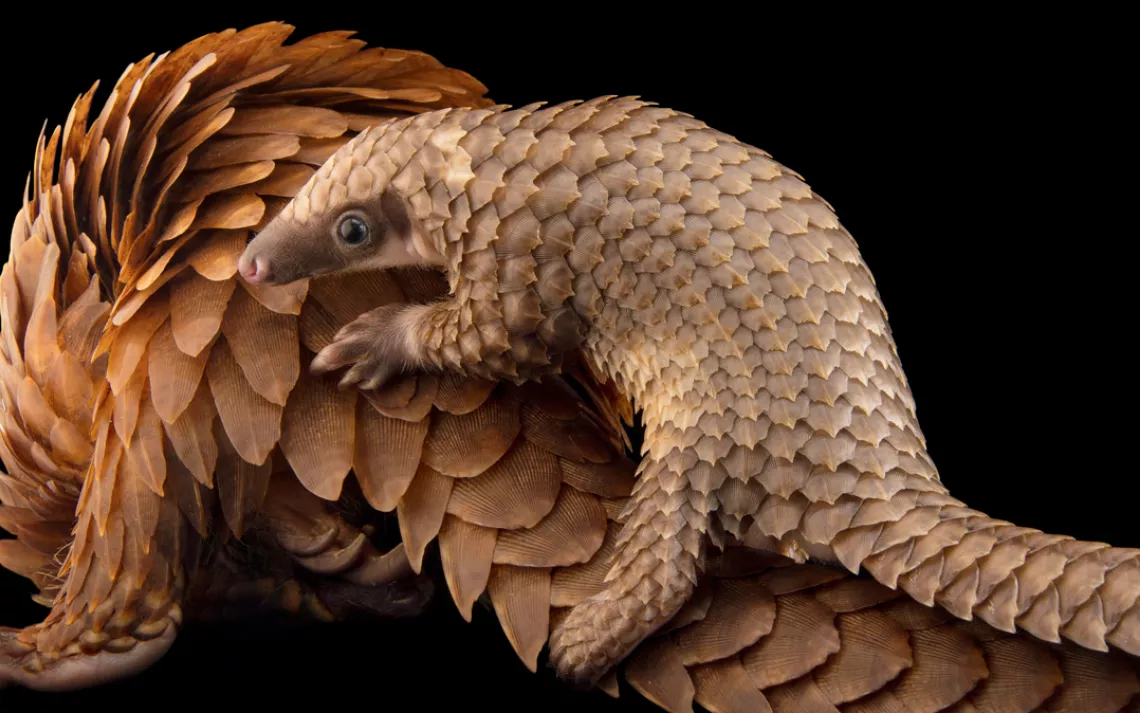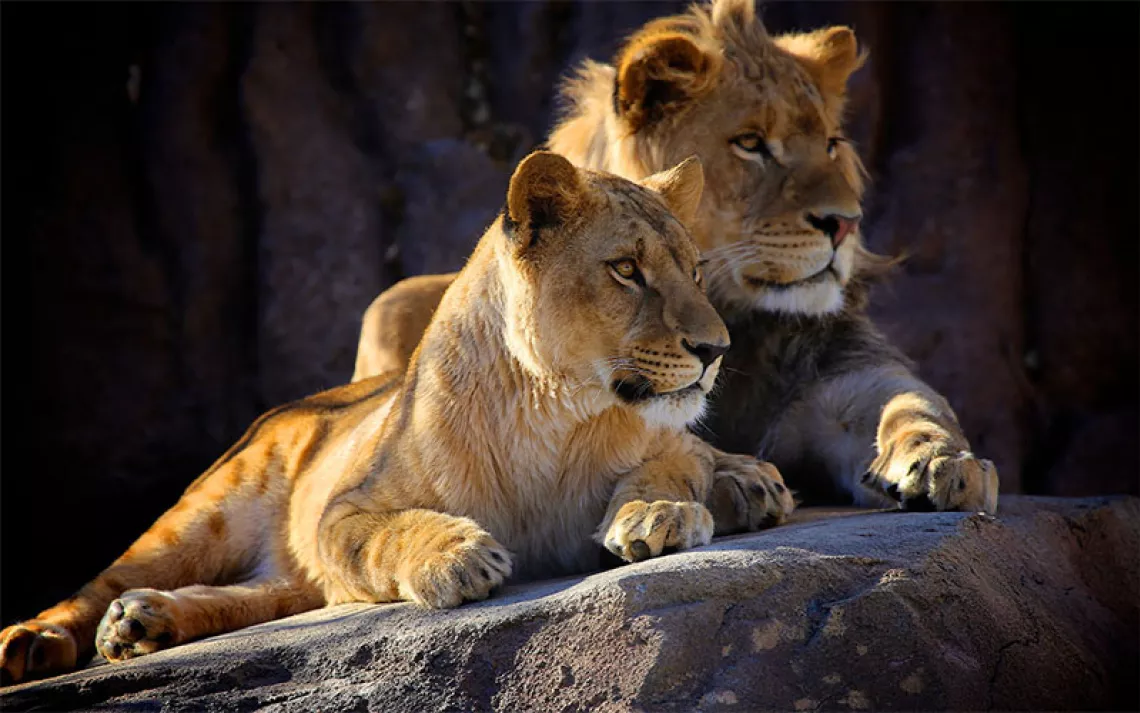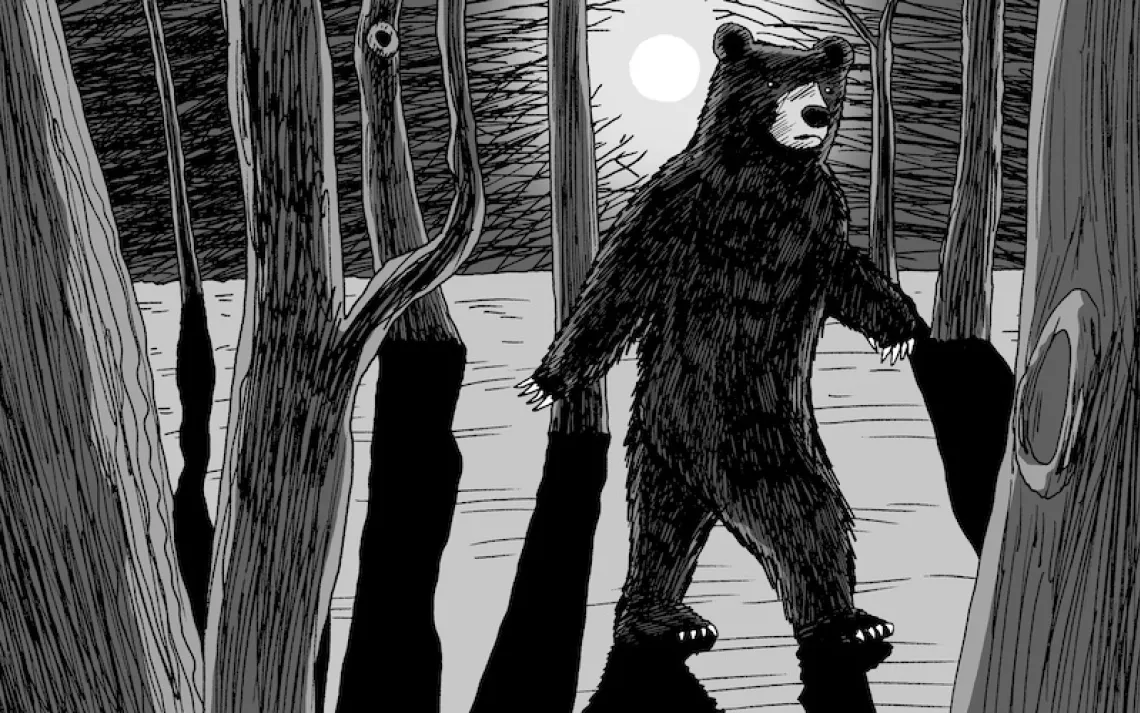The pangolin is the weirdest animal on Earth
A mash-up of a roly-poly, armadillo, and small dinosaur. Why do so many people want to eat it?

A baby white-bellied pangolin (Phataginus tricuspis) clings to her mother's back at a facility in Florida. At just 70 days old, this captive-born baby was a first in captivity. | Photo by Joel Sartore/National Geographic Photo Ark
Check out more images from Joel Sartore’s Photo Ark project.
How is this a real animal? That's a common reaction elicited by the pangolin, a peculiar creature resembling a mash-up of a roly-poly, an armadillo, and a small dinosaur. Also known as a scaly anteater, the pangolin is covered from head to clawed toe in a keratin-based armor—the world's only mammal outfitted with true scales. When threatened, a pangolin curls into a living bowling ball, impenetrable to all but the most determined lion or tiger. While it has no teeth, it is still a fearsome predator, probing the nooks and crannies of ant and termite nests with a sticky tongue that is sometimes longer than its body.
Between meals, some pangolin species can be spotted waddling around the savannas or forest floors of Africa and Asia like tiny T. rexes, while others are more likely to be found shimmying up trees. Arboreal versions dangle from branches with their prehensile tails, performing full-body sit-ups like gymnasts. "They probably have the strongest core strength of any animal," says Dan Challender, co-chair of the Pangolin Specialist Group at the International Union for Conservation of Nature. "They are—in my unbiased opinion—the coolest creatures in the animal kingdom."
Unfortunately, here's another superlative about pangolins: They are likely the world's most highly trafficked mammal due to soaring demand for their meat and scales in China and Vietnam. Challender estimates that more than a million pangolins have fallen victim to the illegal wildlife trade in the last decade. The Convention on International Trade in Endangered Species is considering a global ban on all trade in pangolins and their parts. Without it, one of nature's most weirdly endearing creations could go the way of the real dinosaurs.
This article appeared in the September/October 2016 edition with the headline "Step Aside, Platypus."
What You Can Do
Protect the Pangolins: Not many people know about pangolins, even as they disappear from the Earth at a rate of 100,000 per year. They could go extinct before we realize they exist.
Send a message to the U.S. Fish & Wildlife Service to protect the pangolins!
 The Magazine of The Sierra Club
The Magazine of The Sierra Club







